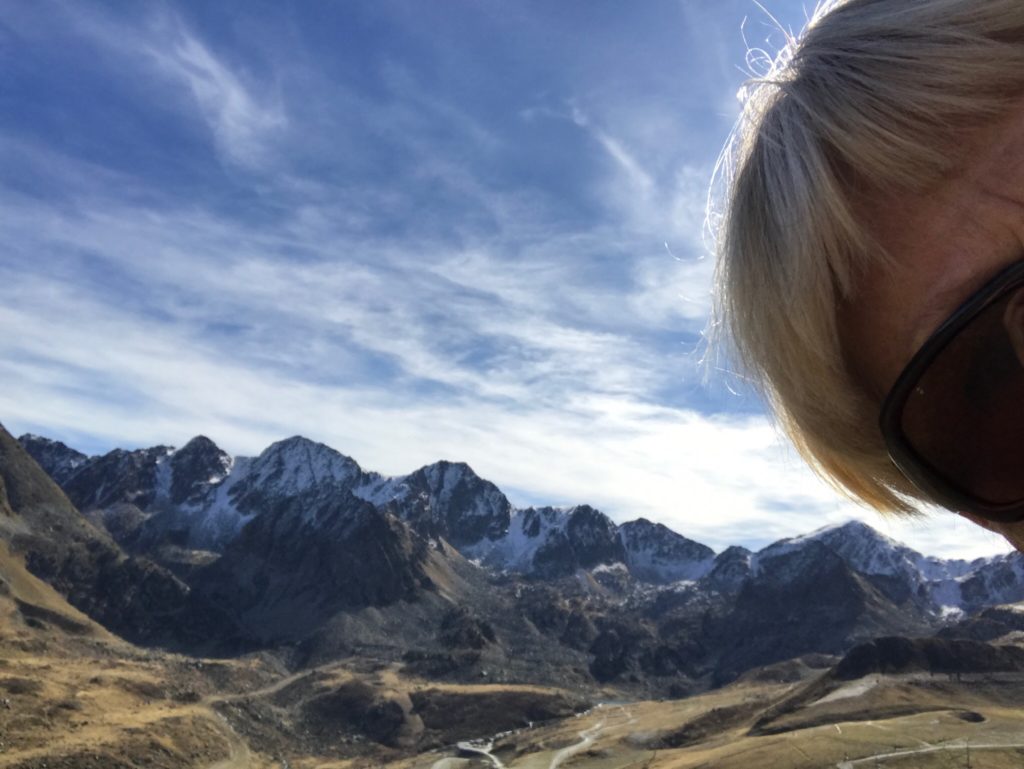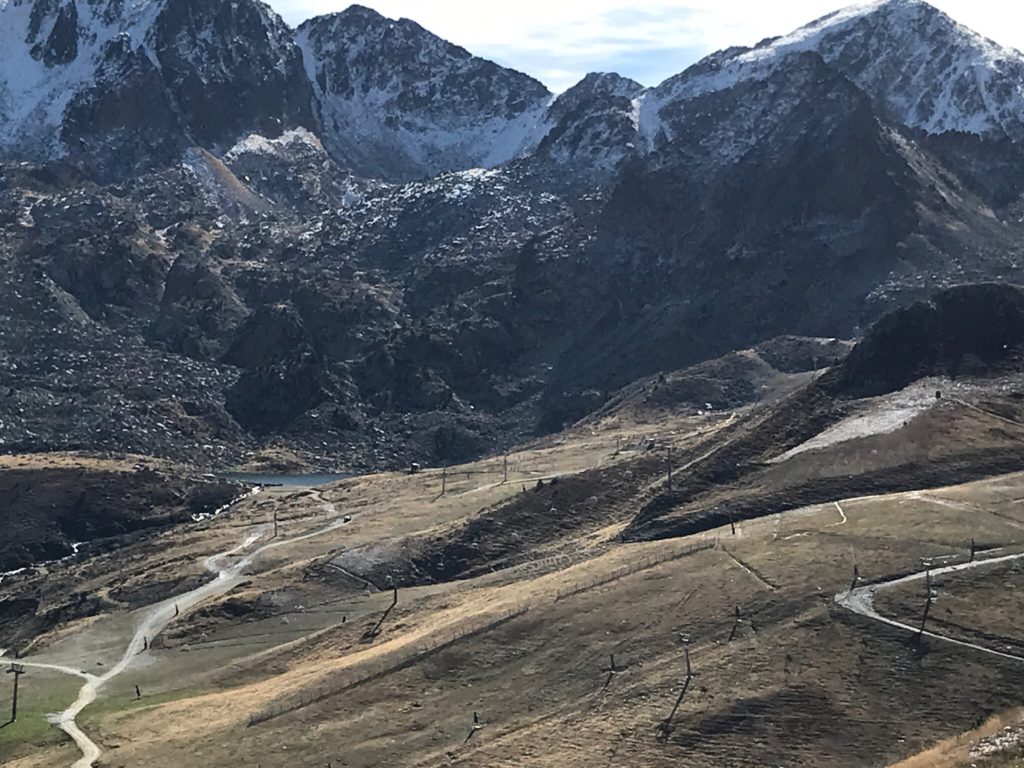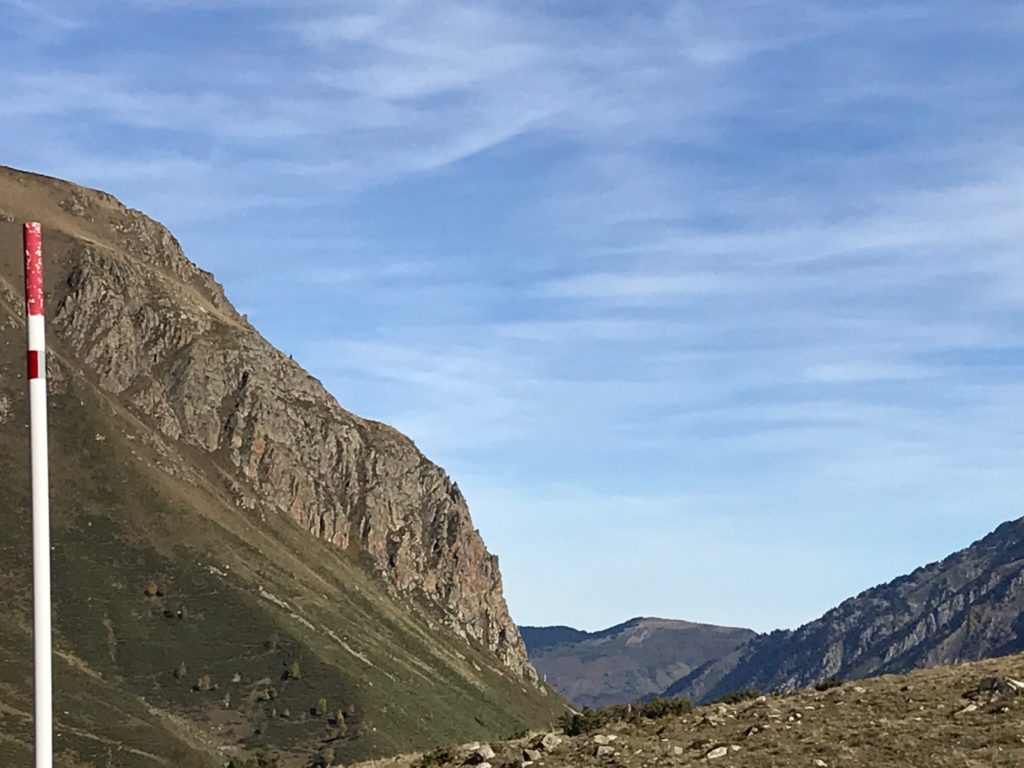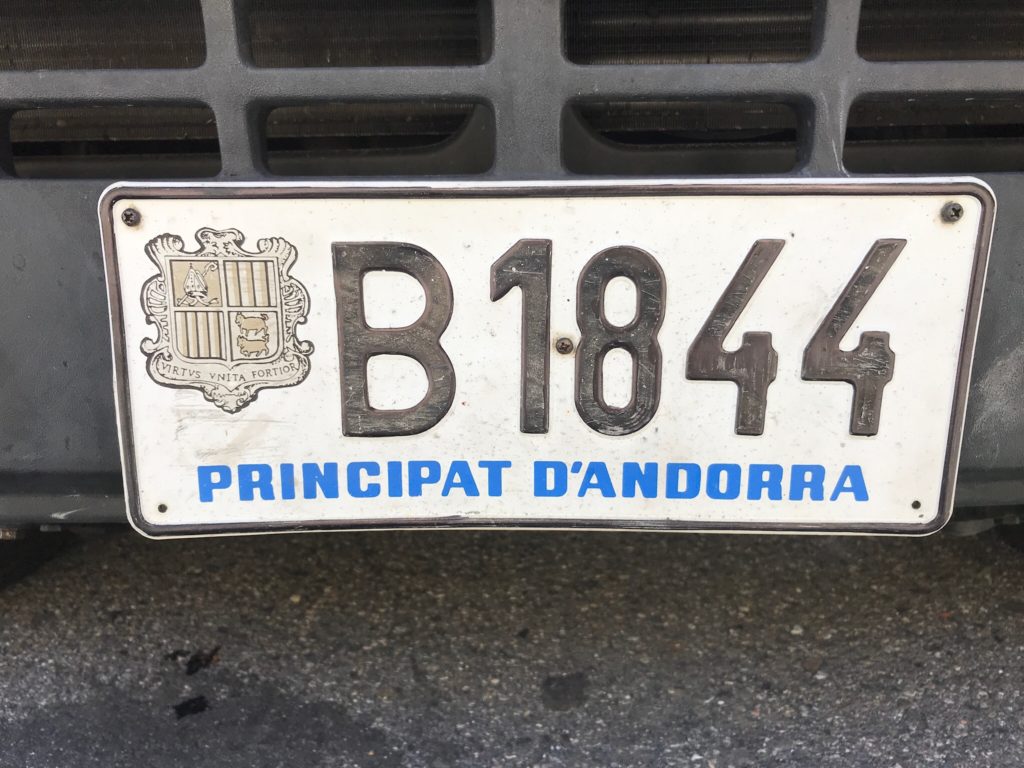27 October 2019

I could not have chosen a better day to visit Andorra.
Within Europe there are six micro-states. These are very small but mighty sovereign states: Monaco, Vatican City, Malta, Liechtenstein, San Marino, and Andorra. Four of these states have broad definitions of a monarchy (Monaco, Liechtenstein, Andorra and Malta) three qualify as principalities (Andorra, Liechtenstein, and Monaco). Malta is the sole sovereign military order, and of course only one papacy exists, the Vatican. Besides this confusing classification of their state of government, all these countries have one thing in common:
All are tiny. None are larger than 181 square miles. That’s about the size of Scottsdale, Arizona.
These countries are small in terra firma, as is their population. Smallest, easily walked across in a few minutes is the Vatican at .17 sq mi; it is also the least populated with 842 residents. San Marino is just slightly bigger, and Monaco sizes up at .78 sq. miles. Liechtenstein at 62 sq mi would take a bike rider just a few minutes to cross; you could walk it on a summer day. Malta at 122 sq mi is larger but surrounded by water.
Andorra is the largest at 181 sq. miles. Packed within its valleys and mountainsides are 85k residents.
All these states trace their history back to the first millennium (1-1000 AD) or the early second millennium, except for Liechtenstein, created in the 17th century. Only Malta is a member of the European Union, but all the micro-states maintain special relationships with their neighbors and the EU.
I have visited five of these micro-states. Today, I am driving to the sixth for lunch. Because of size, I can drive from the French border and have lunch in Andorra la Vella, the capitol, little more than 16 twisting miles across the border. The drive will be on Andorra’s main, and only, freeway. Its border with Spain is another 6 miles south.
Andorra will be the final pin in my micro-states’ travel map.

Shortly before the border, I have the choice to continue driving the CD-2 which is a good road but windy, or turn right for the Tunnel d’Envalira. The CD-2 crosses the Elvalira Pass – the highest in the Pyrenees at 7900 feet. I stay left for the Grandvalira Circuit and drive CD-2 to enter Andorra.
There is a great YouTube video driving this route, via the Tunnel and returning on CD-2, although I suggest motion-sick pills before watching.
https://m.youtube.com/watch?v=kthvfUZQxWA
We are passed through the border at Pas de la Casa. The town is nothing but shops and steep-roofed hotels, traffic and malls, all thanks to tax-free shopping.
I continue along the excellent 2-lane CD-2 as it begins to climb (8% grade) and wind its way over a 6692-foot pass. Guard-rails are appreciated. The land is rocky, its lower hills green with conifer forests of oaks, pines, firs. Higher elevations are bare. The terrain becomes mountainous with peaks between 8957-9245 feet. The higher peaks have a beautiful dusting of snow. Ski slopes abound.
The deciduous forests are showing their fall colors. Spectacular waves of yellow paint the mountainsides. Splashes of brilliant red mingle with the yellow and green of tall and stately aspens and firs. The scenery is a canvas of shapes, movement, and colors.
Speed limits range from 18 mph on hair-pin turns to 50-55 on “straight” sections. Of course, the YouTube driver looks much faster as he zips the curves. Once I reach the roundabout where the Tunnel and CD-2 meet, it is but 3 miles to Soldeu and 14 miles to lunch at Andorra la Vella. Basically, the road has straightened out and my stomach has time to prep for food.

An important stop first, a site my YouTube driver certainly has visited. Near Canillo is the Moto Museum/Museum de les Dues Rodes. Every form of motorbike during the last century is on display. I am sure many have raced this Grandvalira Circuit. An excellent museum – a biker’s dream.
High snow fences line the mountainsides. Avalanches are not unheard of; the warning of such is the reason I did not drive here from Spain in the spring. The words snow and avalanche deterred me. Rain can also cause landslides, a frequent occurrence after heavy rains, the last being in 2009. Earthquakes? Well, they have those too though the last 6.0 occurred on the Spanish side of the Pyrenees. Not to be ignored, a 4.2 shaker occurred in 1999 on the French side. Neither did any damage.
Andorra la Vella, besides being the capital of Andorra, is also a great tax-haven and maker of brandy, the second product much more important to me than the first. Unfortunately, even though less than 2% of the country is arable land, 8% of it is used to grow a very strong, aromatic tobacco. Most of the land I saw looked to be used to graze cattle, sheep and goats, some indistinguishable from the plethora of large rocks.
As in most of Andorra, the local language is Catalan. This is the only country in the world that recognizes Catalan as their only official language. The town is in a valley where mountain streams converge to create the Gran Valira, a tributary which eventually flows into the Ebro River in Spain. Surrounded by the majestic Pyrenees Mountains at an elevation of 3356 feet, Andorra la Vella reigns as the highest capital city in Europe! Expect minor ear-popping but no nose bleeds.
Andorra la Vella has been settled since the Andosin tribe came during the late Neolithic period. The state was entered by Charlemagne in the 8th century and used as a buffer to the Moors conquering the Iberian Peninsula. The settlement of Andorra la Vella has been its principal city since 1278 when the French and the Episcopal co-princes signed the first Paréage of Andorra in 1278, agreeing to a joining sovereignty over the territory. Mostly, this allowed for a degree of growth and independence for tiny Andorra.

If Andorra escaped much of the turmoil and horrors of the 20th century, including exclusion from the Treaty of Versailles ending WW One, it was because it was just a blimp on a mountainous region and remained mostly forgotten and ignored. Not so its fate after 1993 when it created its first constitution and developed a parliamentary democracy centered in Andorra la Vella.
It was after this momentous constitutional event that Andorra developed as a tax-haven. Ski resorts appeared, tourism arrived (including application to host the 2010 Winter Olympics), and modern banking offices popped up all of the town. Andorra has arrived on the map of Europe with a bang and probably will never be ignored again.

Arriving on the CD-2, just past the Burger King and McDonalds, is the bustling modern downtown Andorra la Vella. We park the car and walk to the theme-based, somewhat surreal “Excalibur” restaurant for lunch.Though Andorra la Vella is supposedly a “temperate” climate, because of its lower elevation, the air is crisp. We dine on a rather mediocre paella but good La Riola wine amid knight’s shields and swords and the beginning of Christmas decorations.
Our return is via CD-2 where I enter the Tunnel d’Envalira within minutes at Grau Roig. The Tunnel was completed in 2002 and is the highest tunnel in Europe. Most importantly, it is a no-Ginger Pill route. All that winding and weaving on CD-2 is reduced to 1.27 miles of well-lit, smooth road which passes beneath the Envalira Pass. Its final section traverses France and over the Aríege River to exit at Pas de la Casa – after the congested area of shops and malls.

It has been a great day. The countryside has been gorgeous and the Pyrenees stunning. I would say I adore Andorra but I am sure they have heard that before.
0 Comments